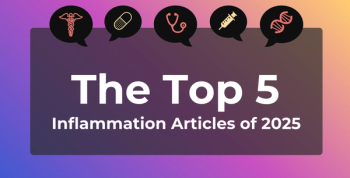
Tirzepatide’s Dual Approach Better for MACE, HF: Stephen Nicholls, MBBS
Tirzepatide's dual mechanism targets GIP and GLP-1, so it provides strong cardiovascular benefits, said Stephen Nicholls, MBBS, PhD, MBA.
The dual glucose-dependent insulinotropic polypeptide (GIP) and glucagon-like peptide-1 (GLP-1) mechanism of tirzepatide makes it a powerful tool in the toolbox, said Stephen Nicholls, MBBS, PhD, MBA, professor of cardiology at Monash University, program director of the Victorian Heart Hospital at Monash Health, and director of the Monash Victorian Heart Institute in Melbourne, Australia.
Transcript was edited; captions were auto-generated.
Transcript
Tirzepatide is a dual GIP and GLP-1 receptor agonist. What can we take away from the results about the impact of the dual mechanism?
I think the added impact of the dual approach to targeting GIP and GLP-1 is clearly the favorable effects on a range of metabolic parameters: better weight loss, better reductions in [hemoglobin] A1c, blood pressure, atherogenic lipids, [and] less of a reduction in eGFR [estimated glomerular filtration rate]. We've seen at least comparable effects on cardiovascular end points. In fact, at the AHA [American Heart Association Scientific Sessions], we're reporting more favorable effects in the heart failure setting, [and] more favorable effects on an expanded MACE [major adverse cardiovascular events] end point, including coronary vascularization. Then we've also presented more favorable effects when we look at a composite of kidney end points.
There are a whole range of other benefits, some of them are biochemical, and then we're starting to see that roll out into more clinical events. Particularly fatal outcomes, which is particularly important, are consistently looking like they're more favorable in the patients treated with tirzepatide compared with dulaglutide.
How do these head-to-head results specifically influence current treatment algorithms for this high-risk population?
I think that if tirzepatide is available in the clinic, it's a tool in the toolbox, and it's a great opportunity for us to sit down with patients and say, “Well, here's the plan. Here are the risk factors we need to target. Here are the therapies we can use. Here's a therapy that at least seems to be more favorable in terms of a number of those risk factors, and it's important to keep in mind that those risk factors don't just drive the cardiovascular complications, but we're going to see a range of other complications of obesity, overweight, whether it's joint disease, dementia, liver disease, you name it.” There's a range of other reasons why one might consider the use of a dual receptor agonist as opposed to a standalone GLP-1.
Newsletter
Stay ahead of policy, cost, and value—subscribe to AJMC for expert insights at the intersection of clinical care and health economics.







































